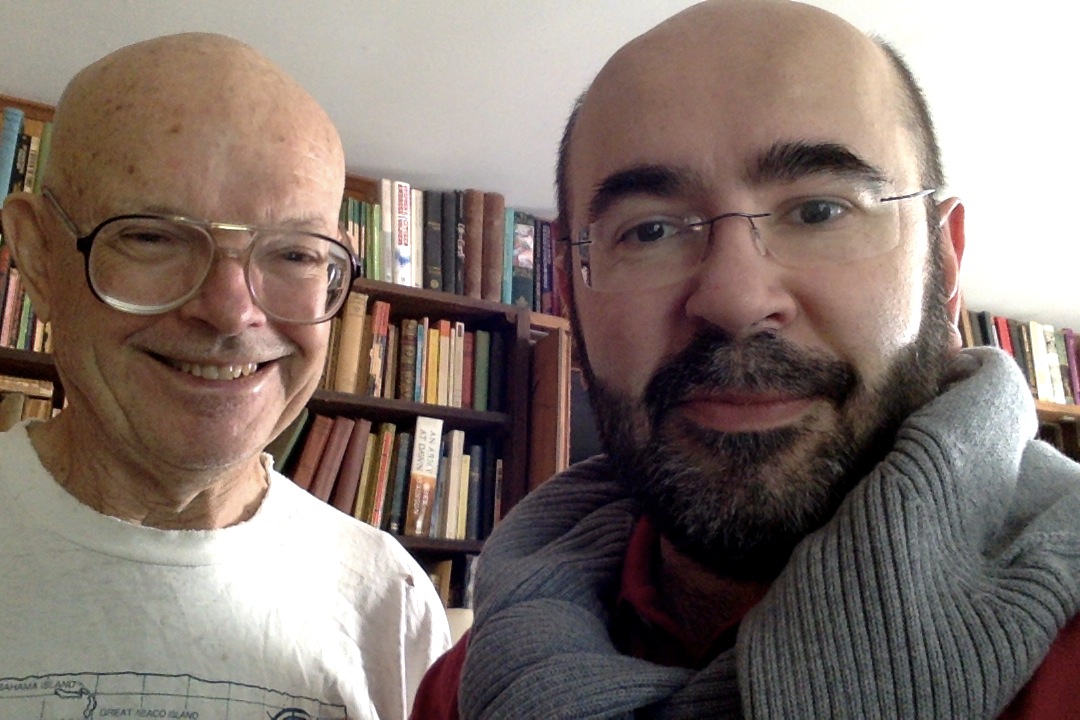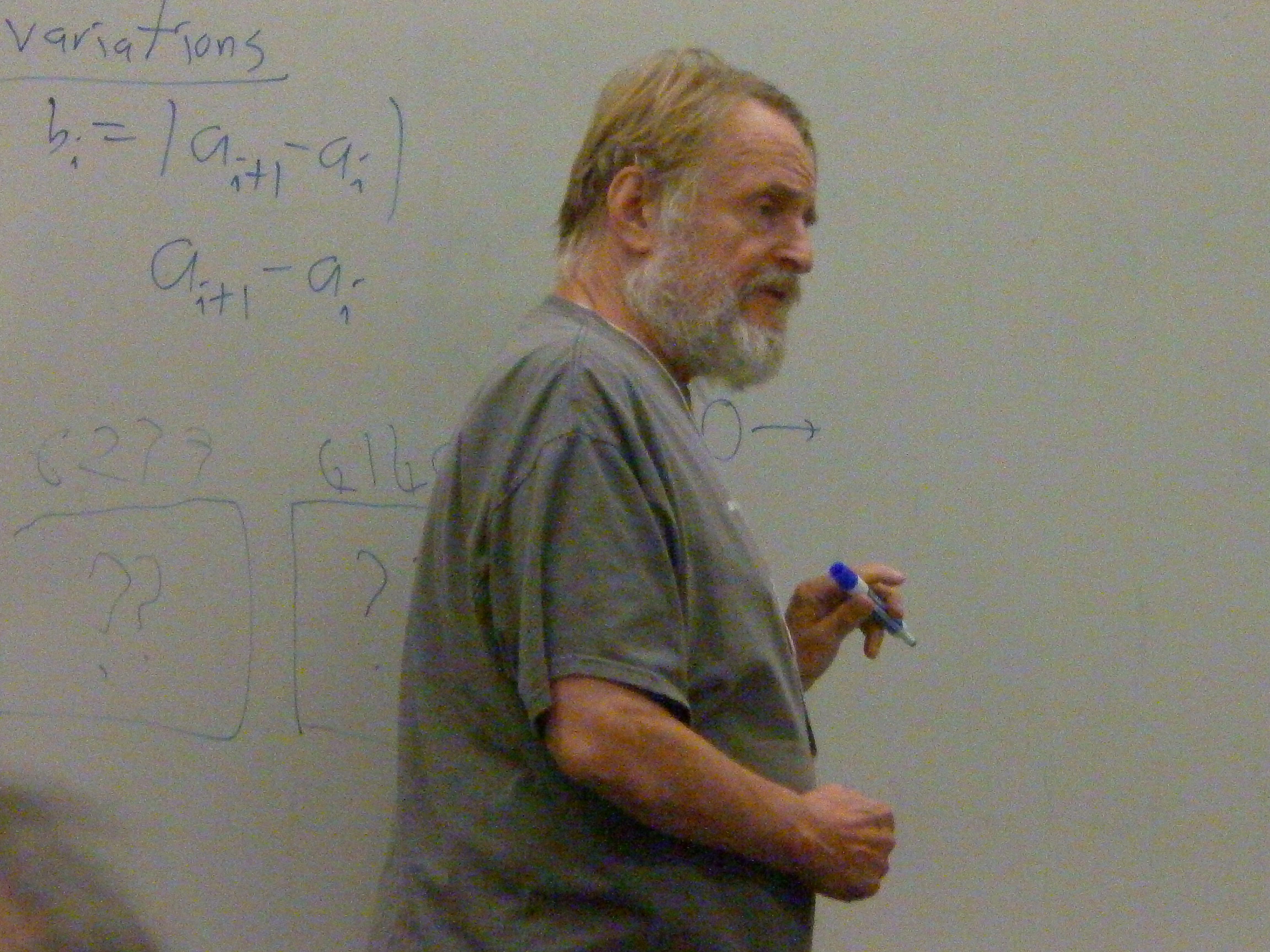50, 75, 250,000: DIMACS Commemorates the OEIS
 [November, 2014] Sequences play an important role in number theory,
combinatorics, and discrete mathematics (among other fields),
and arguably no one has
done more to highlight this role than Neil J. A. Sloane. The DIMACS Conference
on Challenges of Identifying Integer Sequences, held on
October 9-10, 2014, celebrated Sloane’s 75th birthday and paid
tribute to the On-Line Encyclopedia of Integer Sequences® (OEIS®), the massive catalog of
sequences that he created. With roughly 100 registered participants,
it was one of the largest events held so far this year at DIMACS.
Among the participants were many long-time editors and contributors
to the OEIS who have communicated for years but met for the first
time at the conference.
[November, 2014] Sequences play an important role in number theory,
combinatorics, and discrete mathematics (among other fields),
and arguably no one has
done more to highlight this role than Neil J. A. Sloane. The DIMACS Conference
on Challenges of Identifying Integer Sequences, held on
October 9-10, 2014, celebrated Sloane’s 75th birthday and paid
tribute to the On-Line Encyclopedia of Integer Sequences® (OEIS®), the massive catalog of
sequences that he created. With roughly 100 registered participants,
it was one of the largest events held so far this year at DIMACS.
Among the participants were many long-time editors and contributors
to the OEIS who have communicated for years but met for the first
time at the conference.By gathering sequences – and a wealth of information about them – together in a common database, the OEIS provides the mathematically curious an invaluable resource with which to explore. It all began in 1964 when Sloane was a graduate student at Cornell. He happened upon a sequence that began “0, 1, 8, 78, 944…” Interested in getting additional terms in the sequence, Sloane perused books in the library but was unable to find a reference to this particular sequence. To keep track of this and other sequences, he began recording them on index cards sorted in lexicographic order. By 1967, the sequences were transferred to punched cards, and, in 1973, they were published in a book, A Handbook of Integer Sequences, containing 2,372 sequences. Almost immediately, Sloane began receiving correspondence from all over the world with suggestions for additional sequences and updates to existing ones. Over the next 20 years, the collection grew and eventually led to the publication of a second book of 5,487 sequences. Once again, suggestions poured in as soon as the new edition appeared. In 1996, Sloane launched the On-Line Encyclopedia of Integer Sequences as part of his homepage at AT&T Research, and it remained there until 2009 when a non-profit foundation, The OEIS Foundation Inc., was set up to own and operate it.
 The database went online with approximately 10,000
sequences. Liberated from the constraints of print media, the OEIS
is now growing at a rate of roughly 15,000 entries per year and will
soon surpass 250,000 total entries. Each entry typically contains a
variety of useful information – the initial terms of the sequence,
formulas, references, relevant links, Maple or Mathematica programs
to generate it, etc. – harvested from a crowd of trusted sources. An
early and compelling example of crowdsourcing, the OEIS provides a
resource for researchers and recreationalists alike and exemplifies
the spirit of “if you build it they will come.”
The database went online with approximately 10,000
sequences. Liberated from the constraints of print media, the OEIS
is now growing at a rate of roughly 15,000 entries per year and will
soon surpass 250,000 total entries. Each entry typically contains a
variety of useful information – the initial terms of the sequence,
formulas, references, relevant links, Maple or Mathematica programs
to generate it, etc. – harvested from a crowd of trusted sources. An
early and compelling example of crowdsourcing, the OEIS provides a
resource for researchers and recreationalists alike and exemplifies
the spirit of “if you build it they will come.” The research impact of the OEIS is impressive. There are currently more than 3,000 papers and books in mathematics, computer science, engineering, physics, and many other branches of science that reference and/or acknowledge the OEIS. Conference speakers highlighted past breakthroughs and existing open problems, discussed some of the many contributions of the OEIS to research, and identified a “wish list” of features for the future OEIS. Several speakers talked
On the importance of OEIS and the magnitude of Sloane’s contributions to the mathematics community, conference co-organizer Doron Zeilberger states on his website (in Opinion 124), “True, Neil did not prove Fermat’s Last Theorem, nor did he prove the Poincaré Conjecture, nevertheless, the impact of his brainchild OEIS (On-line Encyclopedia of Integer Sequences) on today’s (and tomorrow’s!) mathematical research far surpasses that of any living mathematician.” That impact continues to grow with the OEIS.
Videos for most of the presentations are available here.
Conference program: [ webpage]
Printable version of this story: [PDF].
